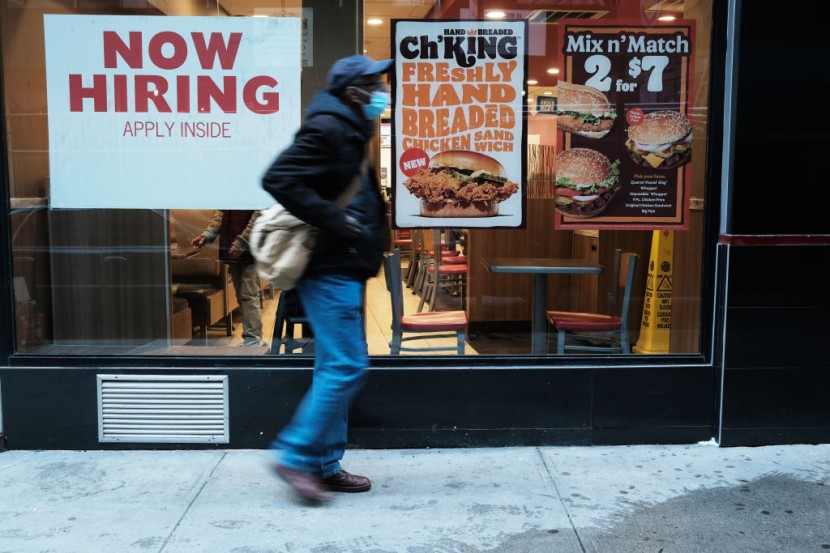
The United States employment market gained an outstanding average of 540,000 people each month over the past year.
Since May 2021, monthly hiring growth has exceeded 400,000 amid a severe inflation rate, Russia-Ukraine war, pandemic, uneasy financial markets, and the prospect of higher borrowing rates, as per a report from the Associated Press.
A poll conducted by the data firm FactSet predicted that the unemployment rate would continue at 3.6%, a bit higher than the half-century low set just before the epidemic two years ago.
When viewed in the context of soaring price increases, rising borrowing costs, and a widespread anxiety that the Federal Reserve's fast interest rate hikes could eventually cause a recession, the job market's resiliency is particularly noteworthy.
Stuart Hoffman, a senior economic adviser at PNC Financial, said that the US labor market "remains in solid shape" as the spring quarter starts.
"Demand for labor is very strong ... Firms are competing for workers and bidding up wages," he added.
The Labor Department provided additional evidence this week that the job market is still flourishing. Only 1.38 million Americans were receiving regular unemployment benefits, the lowest number since 1970, according to the data. Employers announced a record-high 11.5 million job openings in March, according to the report. However, layoffs remained well below registered figures before the pandemic hit.
Another indication of workers' bargaining power in the labor market, a record 4.5 million people quit their jobs in March, presumably confident that they could find a better job elsewhere.
Moreover, over the past year, 3.8 million people have returned to the labor force, meaning they now either have a job or are seeking one.
Balance Is More Important
Yet, according to Diane Swonk, chief economist at Grant Thornton, among the factors hurting productivity are disruptions in the job market. For her, having "a more balanced situation" where wages outpace inflation because employees "are more productive," is not happening now.
"Where we're at today is eroding living standards and that's important," said Swonk.
According to a CNBC report, Swonk said there are now 1.9 job opportunities for every worker, up from 1.2 before the pandemic.
It's unknown how long the employment boom will continue. The Federal Reserve hiked its benchmark rate by a half-percentage point on Wednesday, marking its most aggressive move since 2000, and signaling that more major rate hikes may be imposed sooner or later. As the Fed's rate hikes take effect, borrowing, spending, and hiring will become more expensive for consumers.
Economists warn that the drastically higher borrowing prices could undermine what has been a remarkable strong rebound from the COVID-19 recession, which resulted in the loss of 22 million jobs in March and April 2020, per The New York Times.
Strong Job Market Is Expected To Continue
Increasing company costs and labor supply problems, according to several analysts, may cause employment to peak sooner rather than later: Goldman Sachs' chief economist, Jan Hatzius, predicted that monthly payroll growth would slow to 200,000 jobs in the coming months and continue to decelerate.
Other economists are more optimistic about the labor market, saying that household spending resilience and industry investment in production capacity will lead to continued job hiring.
Ellen Gaske, an economist at asset management firm PGIM, said that businesses expect another "very strong employment report," indicating a sustained "above-trend growth."
"But the supply of labor will also be important to watch and could help either speed up or slow down the pace of any further improvement in the unemployment rate," she added.
Related Article : Hunter Biden Probe: Lawsuit Filed Against President Joe Biden, Administration Officials Over Big Tech Pressure To Censor Issue
© 2025 HNGN, All rights reserved. Do not reproduce without permission.








